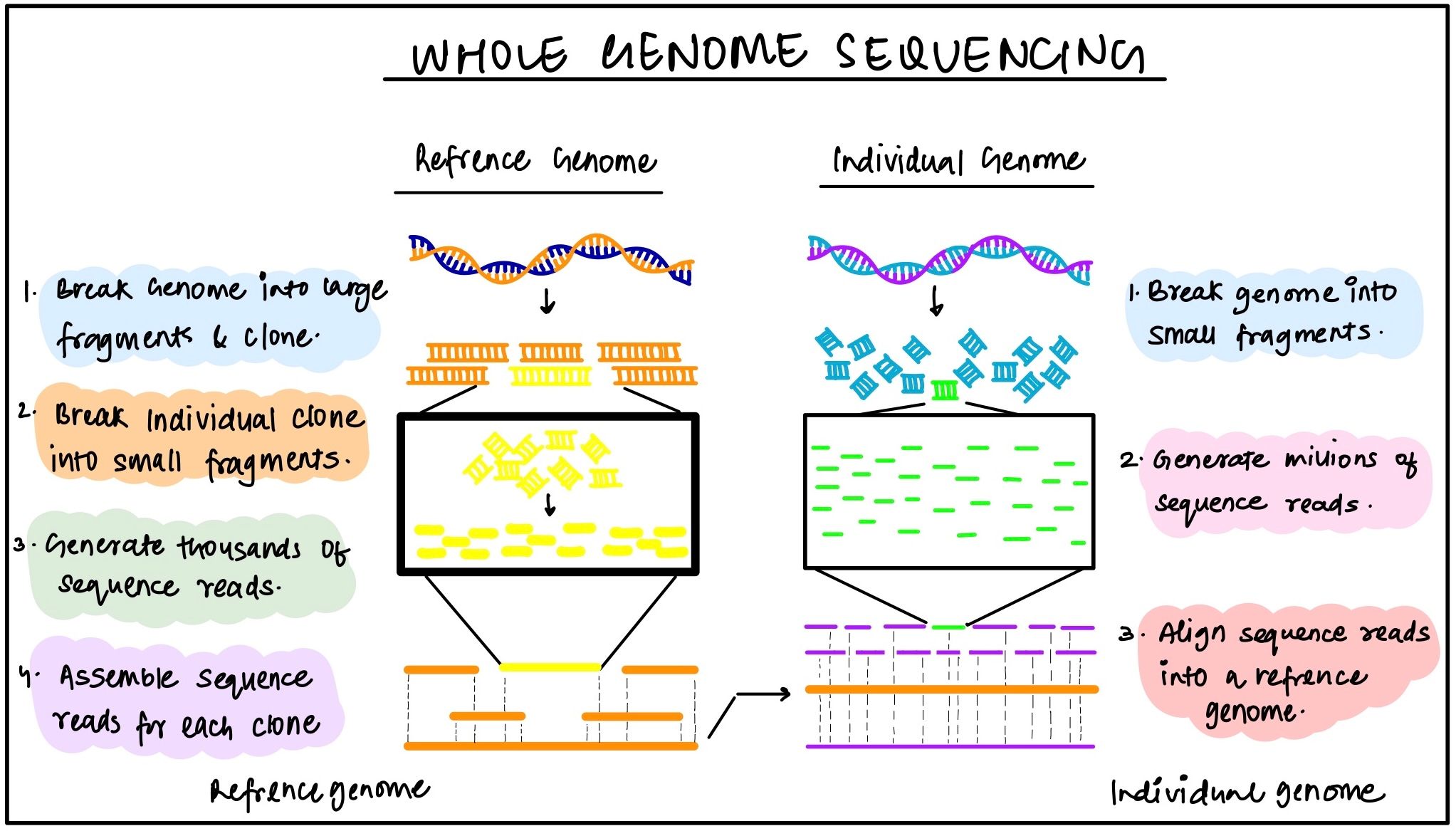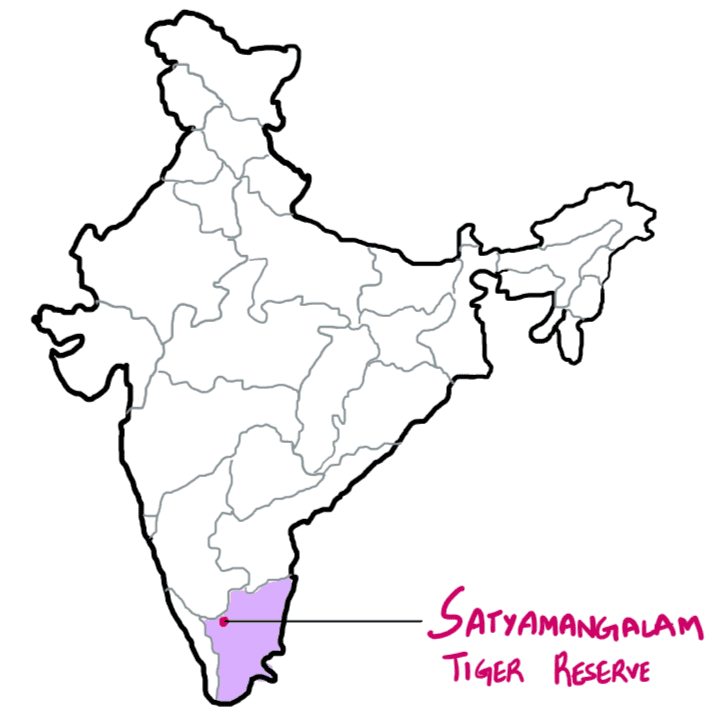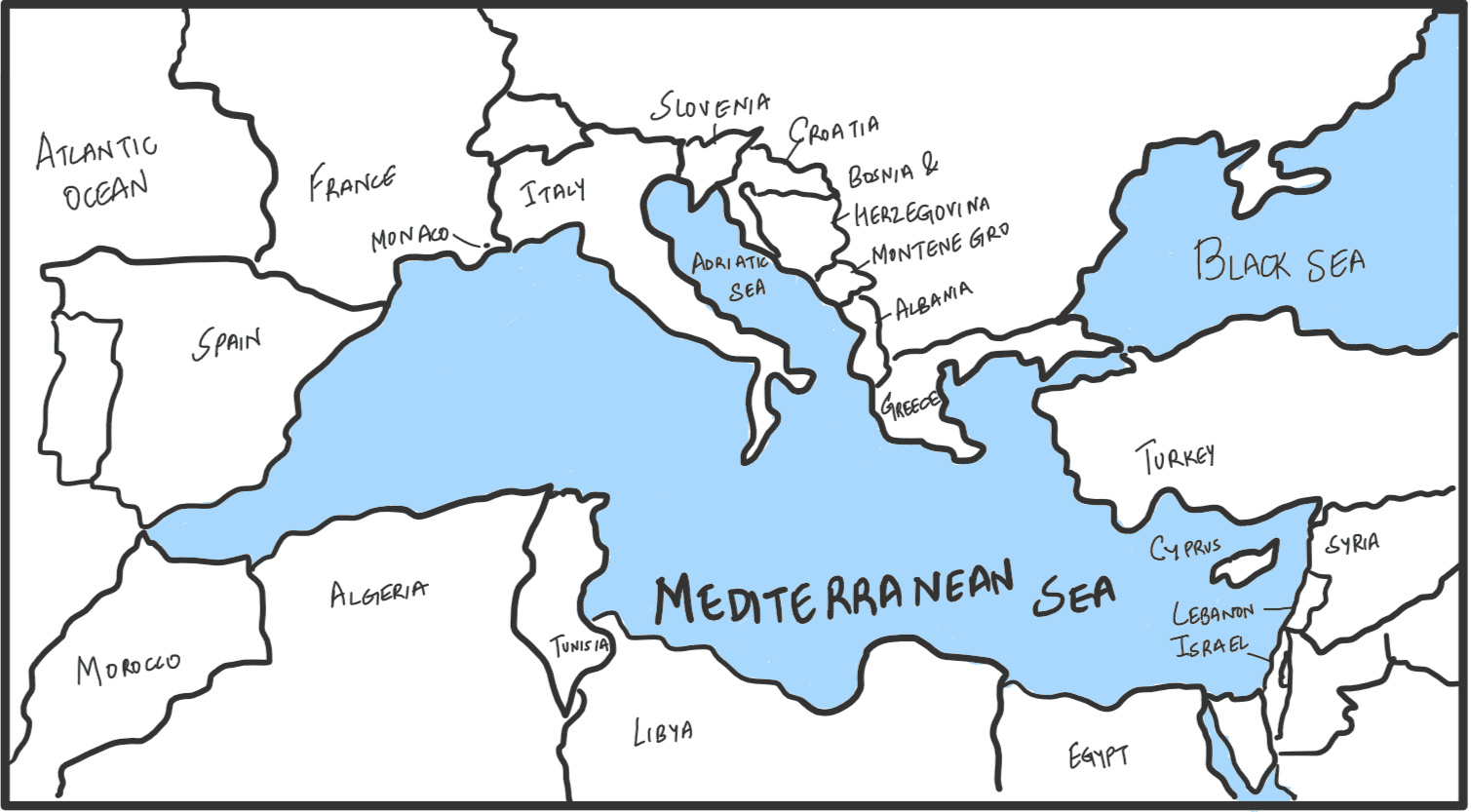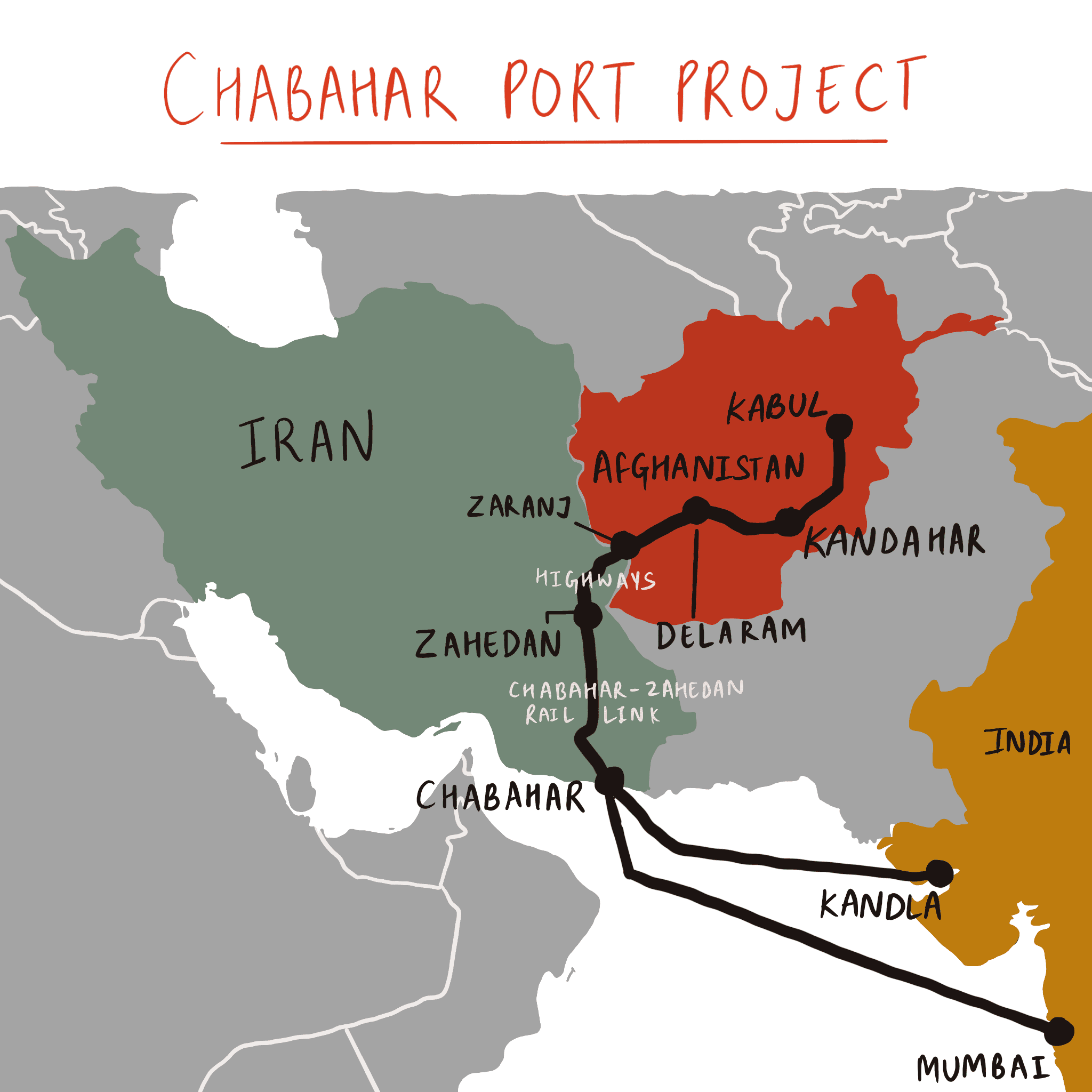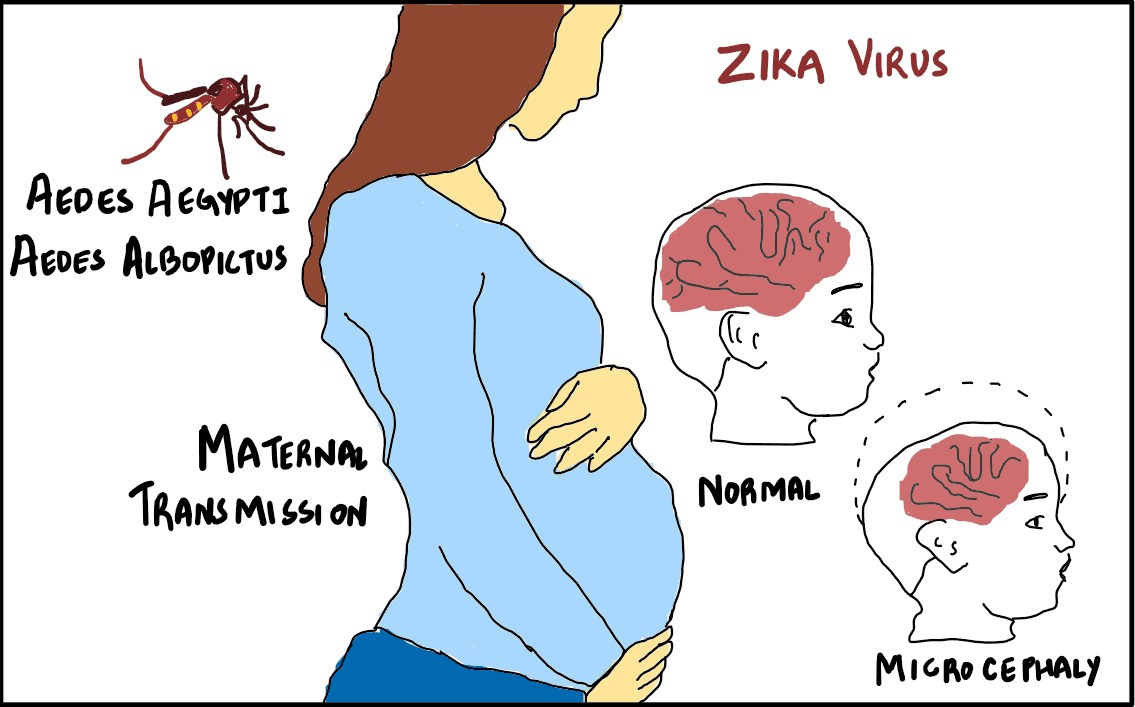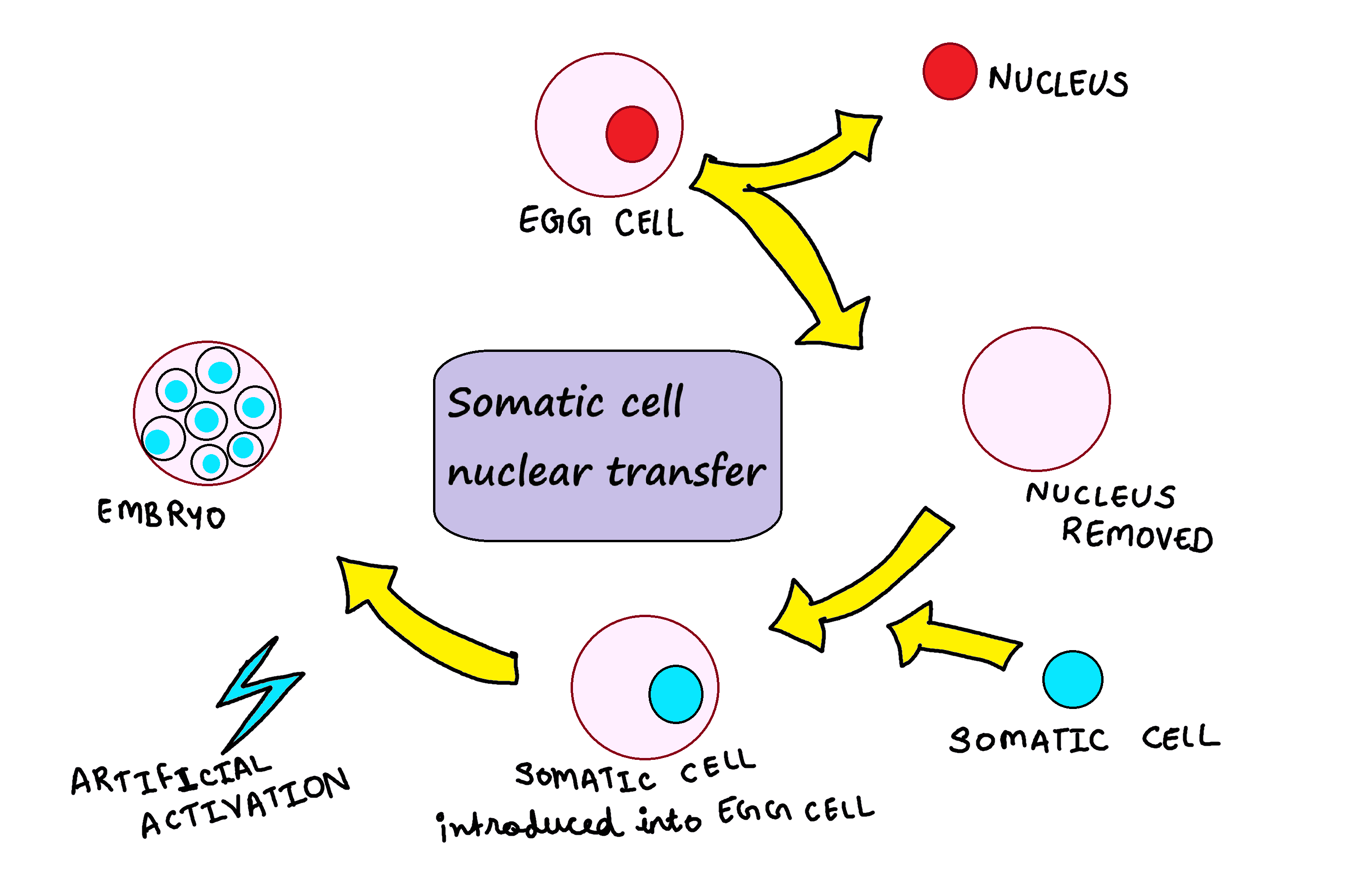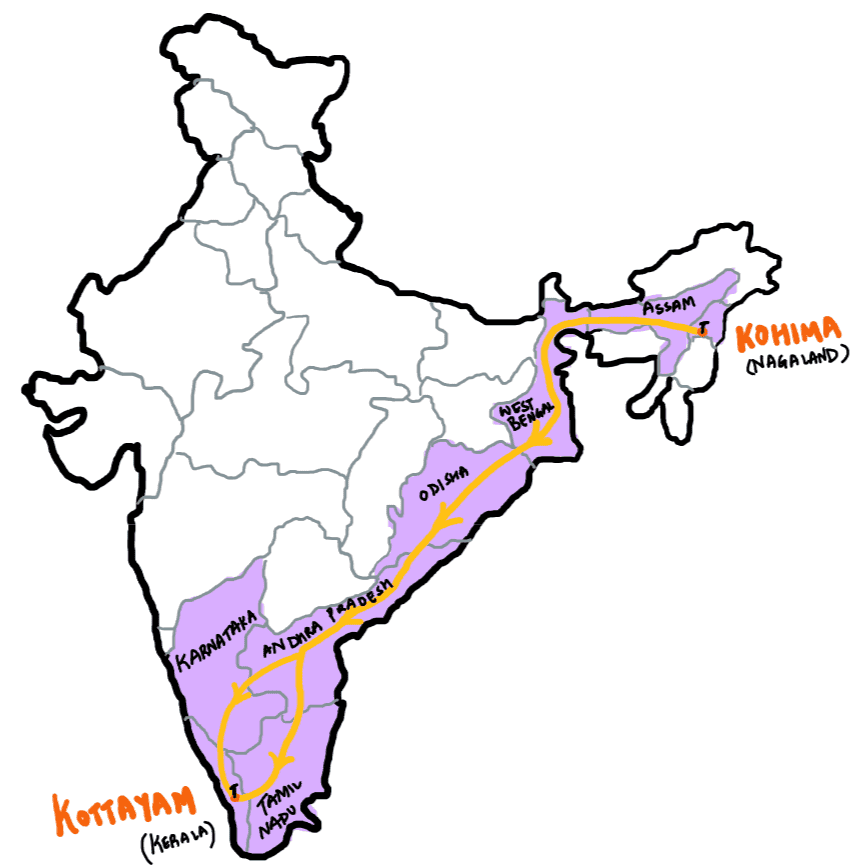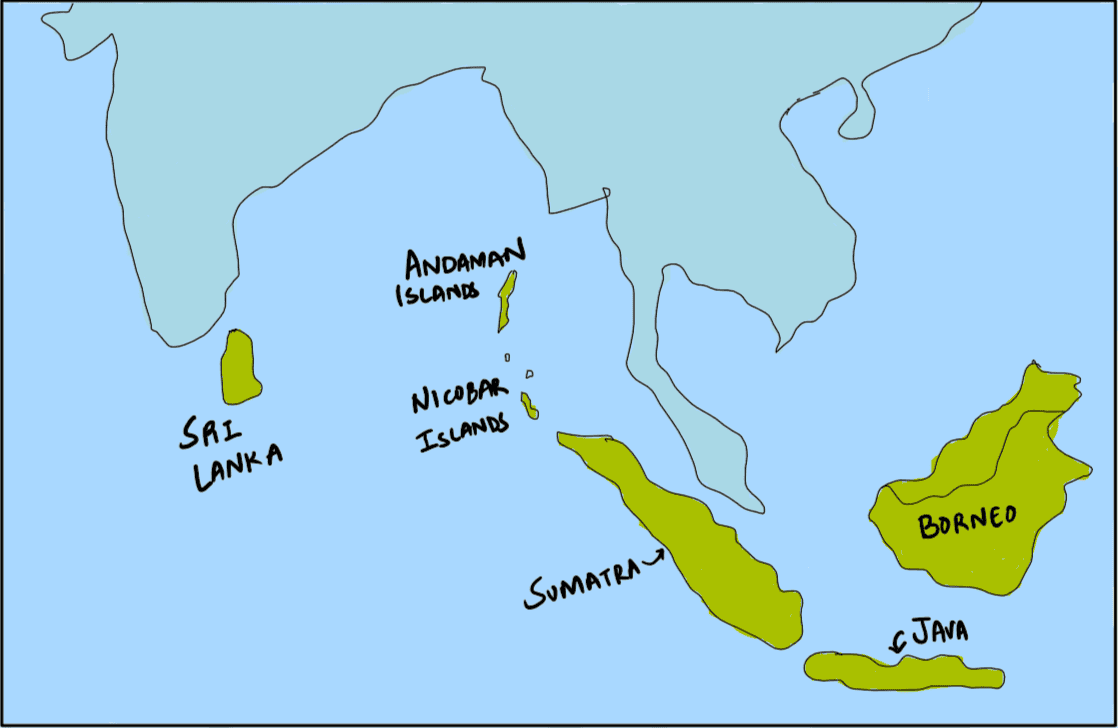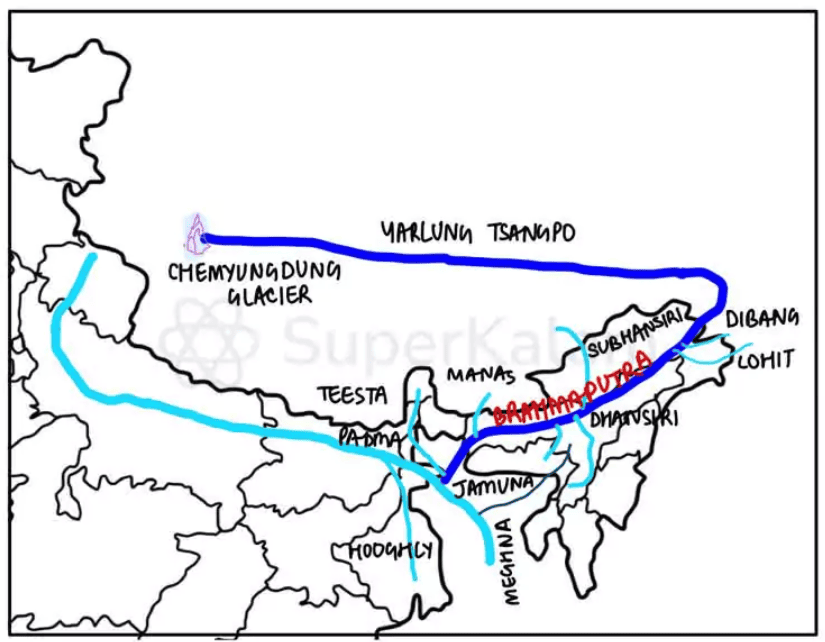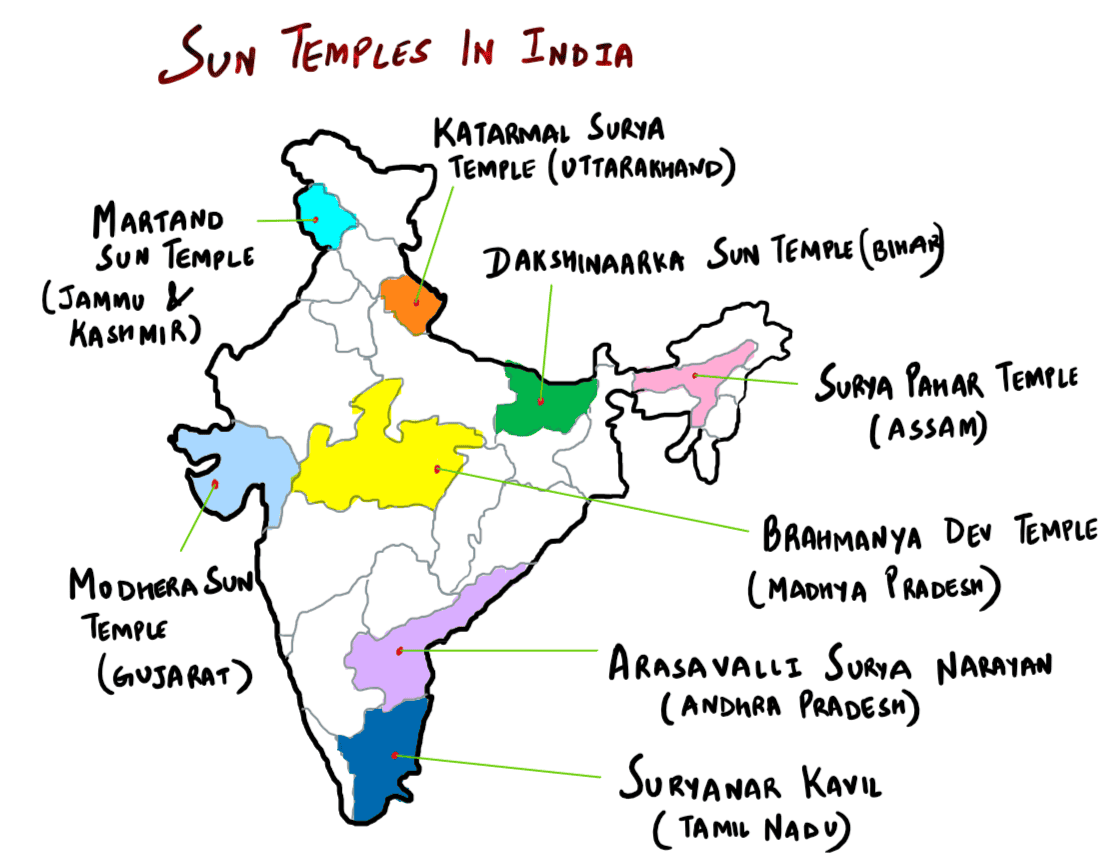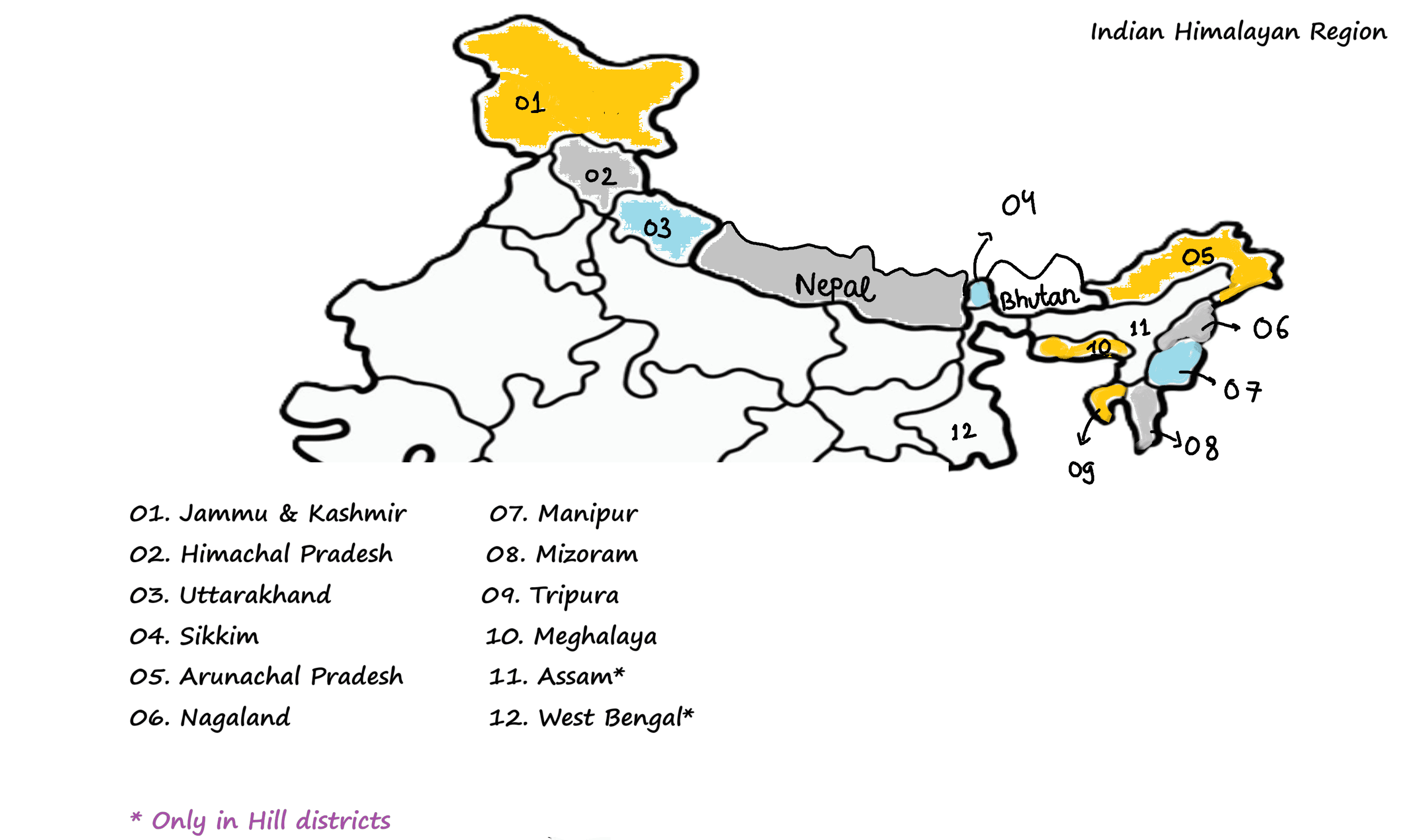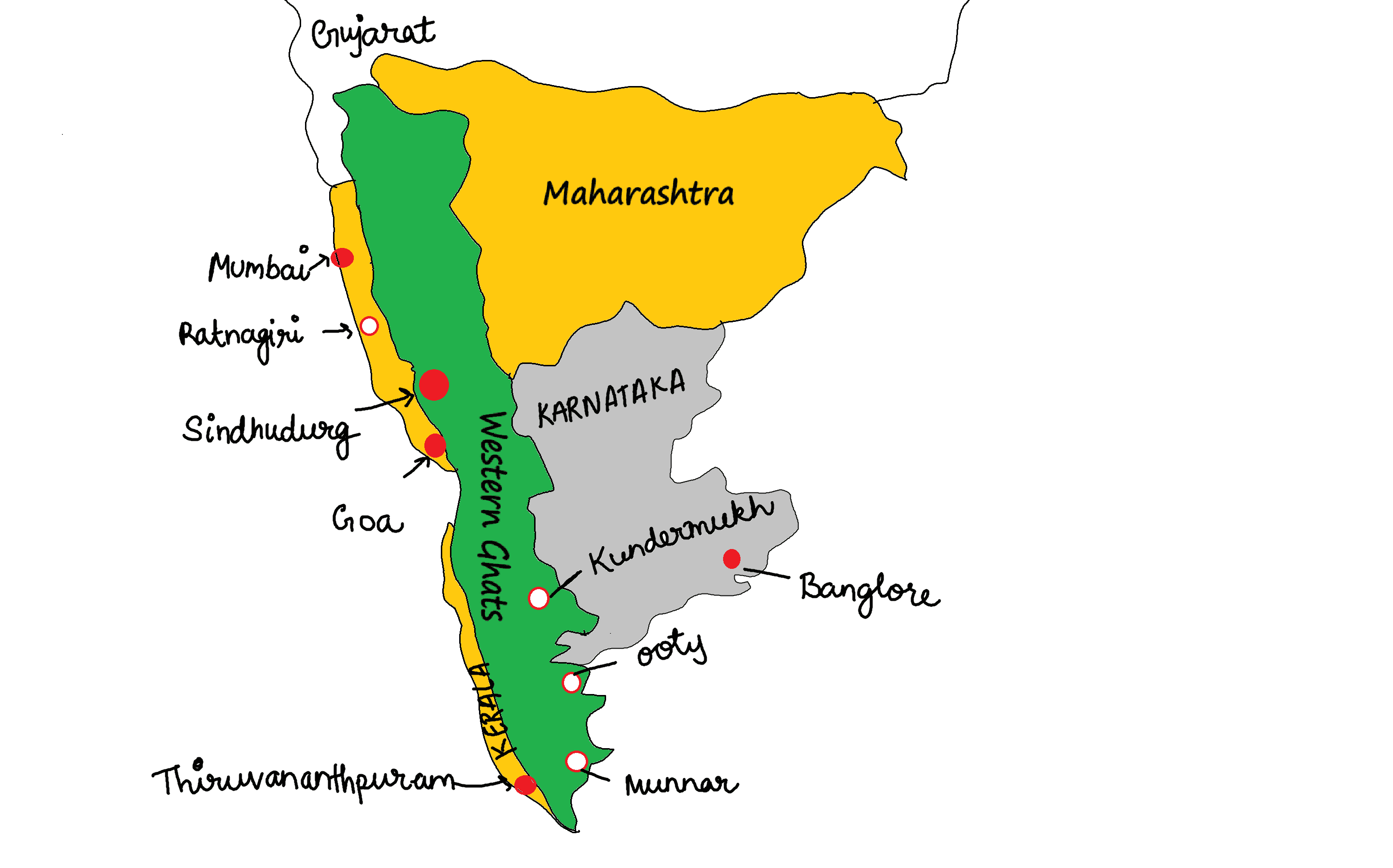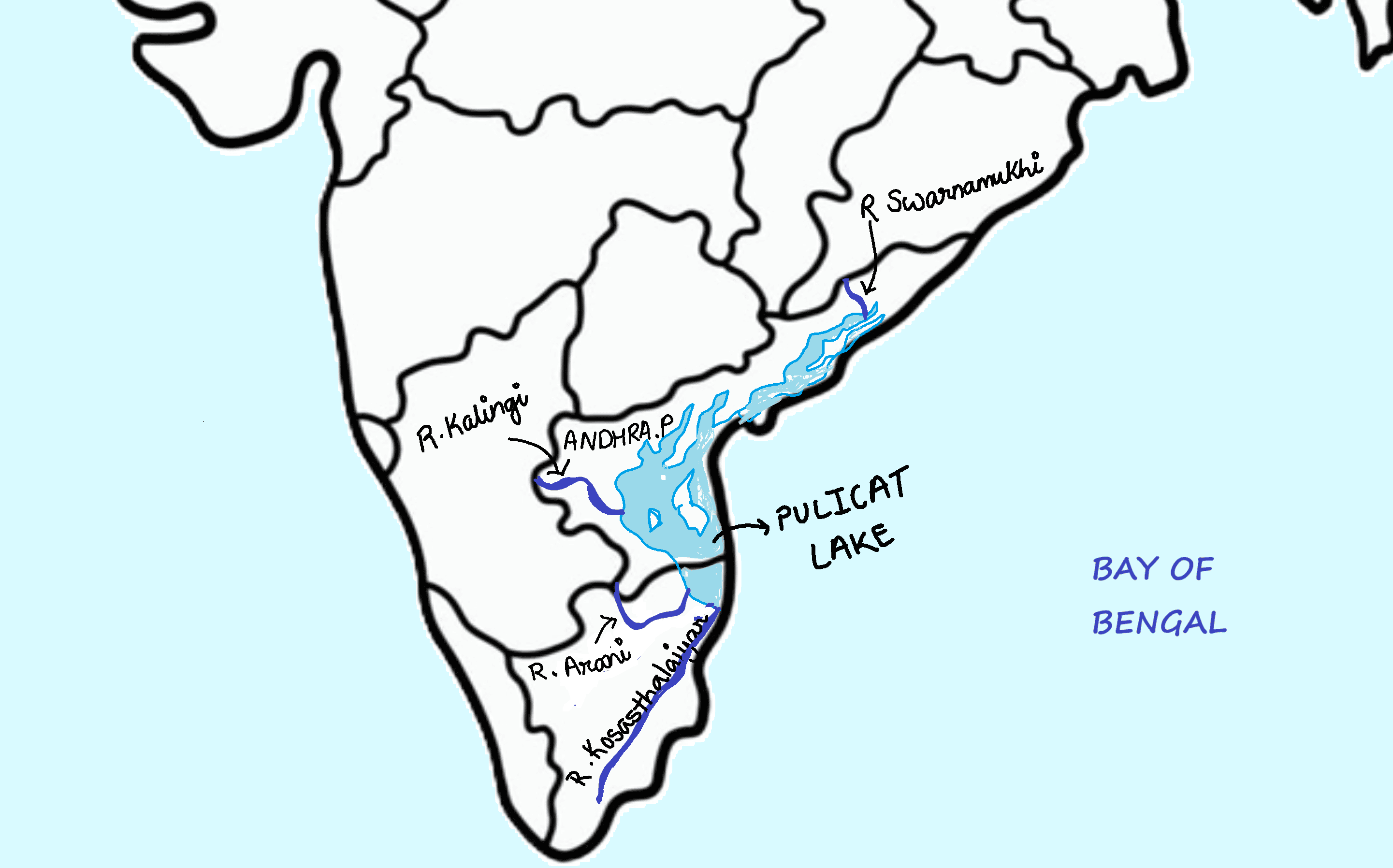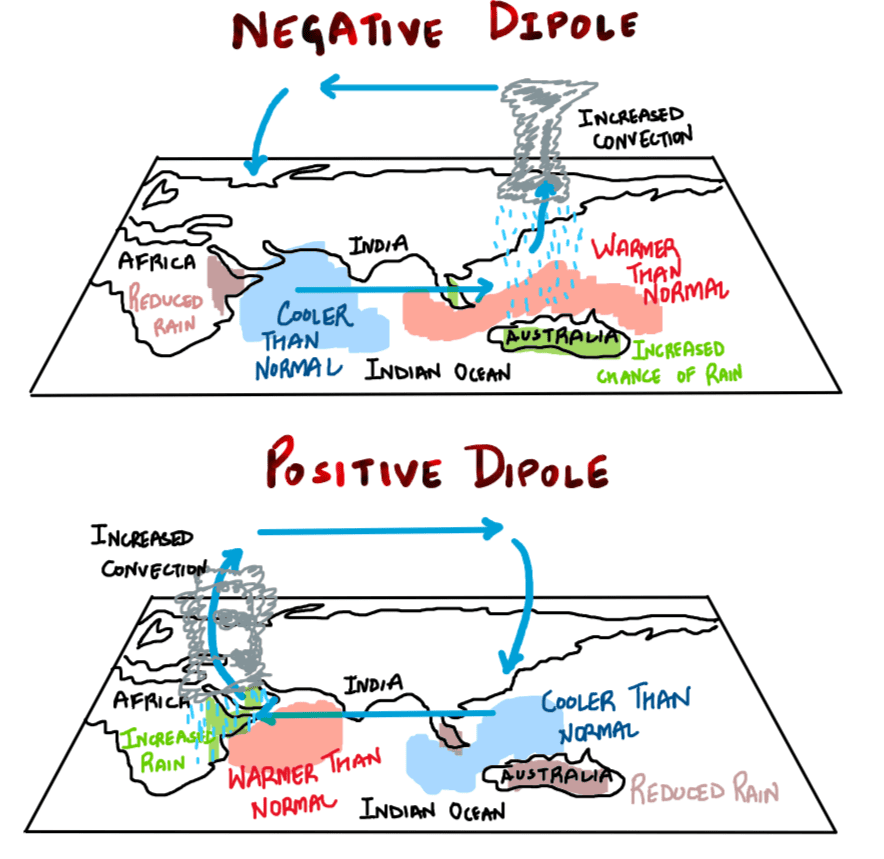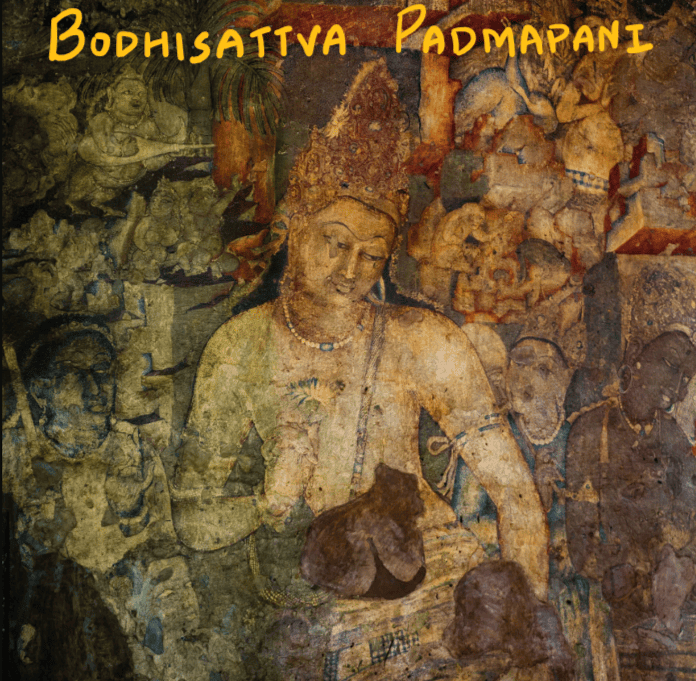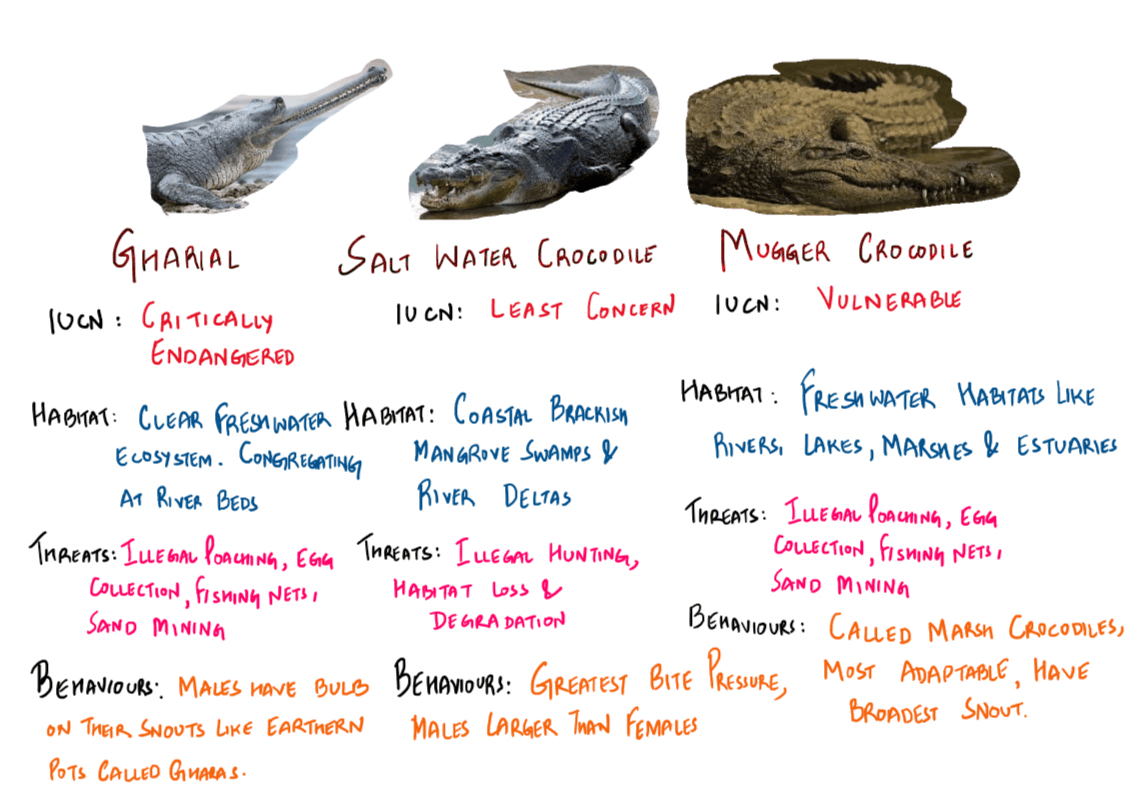UPSC Prelims 2017 Analysis
Subject wise MCQ distribution
- Polity and Governance: The highest weightage in the exam, with questions focusing on core constitutional concepts like democracy and rights, highlighting a return to traditional themes. Many followed the assertion-reasoning format, testing analytical abilities.
Economy: Heavily current affairs-based, covering topics such as GST, Monetary Policy Committee, and post-1991 reforms. Conceptual clarity was crucial for elimination-based questions.
Geography and Environment: Required conceptual clarity and linkages with current affairs, such as the Indian Ocean Dipole. Many questions incorporated maps for better understanding.
History: Weightage remained consistent, but factual knowledge was essential, especially for match the following and multi-statement questions.
Science & Technology: Mostly news-based, testing awareness of recent developments in biotechnology, AI, and space technology.
Government Schemes & Initiatives: A prominent focus area, covering policies related to education, health, and nutrition. Many questions were framed using the elimination technique.

Difficulty analysis
- Easy: Some Polity and Economy questions were straightforward for those who had covered NCERT and standard sources.
- Moderate: Many required linking static and dynamic aspects, such as governance and current affairs.
- Difficult: Environment, Geography, and factual History questions were particularly challenging.
- Tricky: Questions on conventions and alliances where India is not a member, along with misleadingly framed government initiative questions, posed difficulties.

Variations in Question framing
- Direct Questions: 42 direct questions, emphasizing understanding over rote memorization.
- Multi-Statement Based Questions: A significant 58 multi-statement questions, requiring a mix of static and current affairs knowledge. These took longer to solve but allowed option elimination.
- Application-Oriented Questions: Required candidates to link current events with static concepts, testing analytical abilities.
- Elimination-Based Questions: Many options were closely framed, making elimination techniques challenging.
- Deceptively Worded Questions: Designed to test deep knowledge, especially in areas like the National Investment and Infrastructure Fund.

Key learning for Future Preparation
- Strengthen Static Concepts: Read NCERTs and standard books thoroughly for a solid foundation.
- Follow a Reliable Newspaper: Sources like The Hindu, Indian Express, PIB, and PRS are essential for current affairs integration.
- Regularly Revise Government Schemes: Many questions are framed around policies from the India Year Book.
- Adopt a Balanced Approach: Expect a mix of analytical and factual questions; both require preparation.
- Use the Elimination Technique Wisely: Read questions carefully and systematically eliminate options to maximize accuracy.
- Avoid Over-Attempting: The tricky nature of the paper means reckless attempts can lead to penalties through negative marking.
- Strengthen Core Subjects: Excelling in Polity or History can help maximize scores in difficult papers.
- Solve Previous Year Papers: Recurring themes like the Trade Disputes Act and Liberalization highlight the importance of PYQs.
Subject-Wise Answer Key
QUESTION 1
Hard
Economy
Prelims 2017
With reference to the ‘Prohibition of Benami Property Transactions Act, 1988 (PBPT Act) consider the following statements:
- A property transaction is not treated as a benami transaction if the owner of the property is not aware of the transaction.
- Properties held benami are liable for confiscation by the Government.
- The Act provides for three authorities for investigations but does not provide for any appellate mechanism.
Which of the statements given above is/are correct?
A. 1 only
B. 2 only
C. 1 and 3 only
D. 2 and 3 only
QUESTION 2
Medium
Indian Polity
Prelims 2017
In India, Judicial Review implies -
A. The power of the Judiciary to pronounce upon the constitutionality of laws and executive orders.
B. The power of the Judiciary to question the wisdom of the laws enacted by the Legislatures.
C. The power of the Judiciary to review all the legislative enactments before they are assented to by the President.
D. The power of the Judiciary to review its own judgements given earlier in similar or different cases.
QUESTION 3
Medium
Economy
Prelims 2017
Which of the following statements is/are correct regarding the Monetary Policy Committee (MPC)?
- It decides the RBI’s benchmark interest rates.
- It is a 12-member body including the Governor of RBI and is reconstituted every year.
- It functions under the chairmanship of the Union Finance Minister.
Select the correct answer using the code given below :
A. 1 only
B. 1 and 2 only
C. 3 only
D. 2 and 3 only
QUESTION 4
Easy
Economy
Prelims 2017
What is/are the advantage/advantages of implementing the ‘National Agriculture Market’ (NAM) scheme?
- It is a pan-India electronic trading portal for agricultural commodities.
- It provides the farmers access to the nationwide market, with prices commensurate with the quality of their produce.
Select the correct answer using the code given below :
A. 1 only
B. 2 only
C. Both 1 and 2
D. Neither 1 nor 2
QUESTION 5
Hard
Economy
Prelims 2017
The Global Infrastructure Facility is a/an -
A. ASEAN initiative to upgrade infrastructure in Asia and financed by credit from the Asian Development Bank.
B. World Bank collaboration that facilitates the preparation and structuring of complex infrastructure Public-Private Partnerships PPPs to enable mobilization of the private sector and institutional investor capital.
C. Collaboration among the major banks of the world working with the OECD and focused on expanding the set of infrastructure projects that have the potential to mobilize private investment.
D. UNCTAD funded initiative that seeks to finance and facilitate infrastructure development in the world.
QUESTION 6
Hard
Indian Geography
Prelims 2017
At one of the places in India if you stand on the seashore and watch the sea, you will find that the sea water recedes from the shoreline a few kilometres and comes back to the shore, twice a day, and you can actually walk on the sea floor when the water recedes. This unique phenomenon is seen at -
A. Bhavnagar
B. Bheemunipatnam
C. Chandipur
D. Nagapattinam
QUESTION 7
Hard
Medieval History
Prelims 2017
Which one of the following was a very important seaport in the Kakatiya kingdom?
A. Kakinada
B. Motupalli
C. Machilipatnam Masulipatnam
D. Nelluru
QUESTION 8
Medium
Environment & Ecology
Prelims 2017
The term 'M-STRIPES’ is sometimes seen in the news in the context of
A. Captive breeding of Wild Fauna
B. Maintenance of Tiger Reserves
C. Indigenous Satellite Navigation System
D. Security of National Highways
QUESTION 9
Easy
Social Issues & Schemes
Prelims 2017
What is the aim of the programme ‘Unnat Bharat Abhiyan’?
A. Achieving 100% literacy by promoting collaboration between voluntary organizations and government’s education system and local communities.
B. Connecting institutions of higher education with local communities to address development challenges through appropriate technologies.
C. Strengthening India’s scientific research institutions in order to make India a scientific and technological power.
D. Developing human capital by allocating special funds for health care and education of rural and urban poor, and organizing skill development programmes and vocational training for them.
QUESTION 10
Medium
Social Issues & Schemes
Prelims 2017
What is the purpose of ‘Vidyanjali Yojana’?
- To enable the famous foreign educational institutions to open their campuses in India.
- To increase the quality of education provided in government schools by taking help from the private sector and the community.
- To encourage voluntary monetary contributions from private individuals and organizations so as to improve the infrastructure facilities for primary and secondary schools.
Select the correct answer using the code given below :
A. 2 only
B. 3 only
C. 1 and 2 only
D. 2 and 3 only
QUESTION 11
Easy
Indian Polity
Prelims 2017
One of the implications of equality in society is the absence of -
A. Privileges
B. Restraints
C. Competition
D. Ideology
QUESTION 12
Easy
Science & Technology
Prelims 2017
What is the purpose of ‘evolved Laser Interferometer Space Antenna (eLISA)’ project?
A. To detect neutrinos
B. To detect gravitational waves
C. To detect the effectiveness of missile defence system
D. To study the effect of solar flares on our communication systems
QUESTION 13
Easy
Economy
Prelims 2017
Which of the following has/have occurred in India after its liberalization of economic policies in 1991?
- The share of agriculture in GDP increased enormously.
- The share of India’s exports in world trade increased.
- FDI inflows increased.
- India’s foreign exchange reserves increased enormously.
Select the correct answer using the codes given below :
A. 1 and 4 only
B. 2, 3 and 4 only
C. 2 and 3 only
D. 1, 2, 3 and 4
QUESTION 14
Hard
Science & Technology
Prelims 2017
With reference to agriculture in India, how can the technique of ‘genome sequencing’, often seen in the news, be used in the immediate future?
- Genome sequencing can be used to identify genetic markers for disease resistance and drought tolerance in various crop plants.
- This technique helps in reducing the time required to develop new varieties of crop plants.
- It can be used to decipher the host-pathogen relationships in crops.
Select the correct answer using the code given below:
A. 1 only
B. 2 and 3 only
C. 1 and 3 only
D. 1, 2 and 3
QUESTION 15
Hard
Science & Technology
Prelims 2017
In India, it is legally mandatory for which of the following to report on cybersecurity incidents?
- Service providers
- Data centres
- Body corporate
Select the correct answer using the code given below:
A. 1 only
B. 1 and 2 only
C. 3 only
D. 1, 2 and 3
QUESTION 16
Easy
Environment & Ecology
Prelims 2017
In India, if a species of tortoise is declared protected under Schedule I of the Wildlife (Protection) Act, 1972, what does it imply?
A. It enjoys the same level of protection as the tiger.
B. It no longer exists in the wild, a few individuals are under captive protection, and now it is impossible to prevent its extinction.
C. It is endemic to a particular region of India.
D. Both b and c stated above are correct in this context.
QUESTION 17
Easy
Indian Polity
Prelims 2017
Local self-government can be best explained as an exercise in -
A. Federalism
B. Democratic decentralization
C. Administrative delegation
D. Direct democracy
QUESTION 18
Hard
Environment & Ecology
Prelims 2017
From the ecological point of view, which one of the following assumes importance in being a good link between the Eastern Ghats and the Western Ghats?
A. Sathyamangalam Tiger Reserve
B. Nallamala Forest
C. Nagarhole National Park
D. Seshachalam Biosphere Reserve
QUESTION 19
Medium
World Geography
Prelims 2017
The Mediterranean Sea is a border of which of the following countries?
- Jordan
- Iraq
- Lebanon
- Syria
Select the correct answer using the code given below:
A. 1, 2 and 3 only
B. 2 and 3 only
C. 3 and 4 only
D. 1, 3 and 4 only
QUESTION 20
Easy
Modern History
Prelims 2017
With reference to the Indian freedom struggle, consider the following events:
- Mutiny in Royal Indian Navy
- Quit India Movement launched
- Second Round Table Conference
What is the correct chronological sequence of the above events?
A. 1-2-3
B. 2-1-3
C. 3-2-1
D. 3-1-2
QUESTION 21
Hard
Environment & Ecology
Prelims 2017
Consider the following statements in respect of Trade-Related Analysis of Fauna and Flora in Commerce (TRAFFIC):
- TRAFFIC is a bureau under the United Nations Environment Programme (UNEP).
- The mission of TRAFFIC is to ensure that trade in wild plants and animals is not a threat to the conservation of nature.
Which of the above statements is/are correct?
A. 1 only
B. 2 only
C. Both 1 and 2
D. Neither 1 nor 2
QUESTION 22
Medium
Social Issues & Schemes
Prelims 2017
Consider the following in respect of ‘National Career Service’:
- National Career Service is an initiative of the Department of Personnel and Training, Government of India.
- National Career Service has been launched in a Mission Mode to improve the employment opportunities to uneducated youth of the country.
Which of the above statements is/are correct?
A. 1 only
B. 2 only
C. Both 1 and 2
D. Neither 1 nor 2
QUESTION 23
Easy
Indian Polity
Prelims 2017
The mind of the makers of the Constitution of India is reflected in which of the following?
A. The Preamble
B. The Fundamental Rights
C. The Directive Principles of State Policy
D. The Fundamental Duties
QUESTION 24
Medium
International Relations
Prelims 2017
With reference to the role of UN-Habitat in the United Nations programme working towards a better urban future, which of the statements is/are correct?
- UN-Habitat has been mandated by the United Nations General Assembly to promote socially and environmentally sustainable towns and cities to provide adequate shelter for all.
- Its partners are either governments or local urban authorities only.
- UN-Habitat contributes to the overall objective of the United Nations system to reduce poverty and to promote access to safe drinking water and basic sanitation.
Select the correct answer using the code given below:
A. 1, 2 and 3
B. 1 and 3 only
C. 2 and 3 only
D. 1 only
QUESTION 25
Hard
Science & Technology
Prelims 2017
It is possible to produce algae-based biofuels, but what is/are the likely limitation(s) of developing countries in promoting this industry?
- Production of algae-based biofuels is possible in seas only and not on continents.
- Setting up and engineering the algae-based biofuel production requires a high level of expertise/technology until the construction is completed.
- Economically viable production necessitates the setting up of large scale facilities which may raise ecological and social concerns.
Select the correct answer using the code given below:
A. 1 and 2 only
B. 2 and 3 only
C. 3 only
D. 1, 2 and 3
QUESTION 26
Easy
Environment & Ecology
Prelims 2017
If you want to see gharials in their natural habitat, which one of the following is the best place to visit?
A. Bhitarkanika Mangroves
B. Chambal River
C. Pulicat Lake
D. Deepor Beel
QUESTION 27
Medium
Indian Polity
Prelims 2017
Which of the following are not necessarily the consequences of the proclamation of the President’s rule in a State?
- Dissolution of the State Legislative Assembly
- Removal of the Council of Ministers in the State
- Dissolution of the local bodies
Which of the above-given statements is correct?
A. 1 and 2 only
B. 1 and 3 only
C. 2 and 3 only
D. 1, 2 and 3
QUESTION 28
Easy
Economy
Prelims 2017
Consider the following statements:
- National Payments Corporation of India (NPCI) helps in promoting financial inclusion in the country.
- NPCI has launched RuPay, a card payment scheme.
Which of the statements given above is/are correct?
A. 1 only
B. 2 only
C. Both 1 and 2
D. Neither 1 nor 2
QUESTION 29
Medium
Art & Culture
Prelims 2017
With reference to Manipuri Sankirtana, consider the following statements:
- It is a song and dance performance.
- Cymbals are the only musical instruments used in the performance.
- It is performed to narrate the life and deeds of Lord Krishna.
Which of the statements given above is/are correct?
A. 1, 2 and 3.
B. 1 and 3 only
C. 2 and 3 only
D. 1 only
QUESTION 30
Hard
Environment & Ecology
Prelims 2017
Consider the following statements:
- Climate and Clean Air Coalition (CCAC) to Reduce Short-Lived Climate Pollutants is a unique initiative of G20 group of countries.
- The CCAC focuses on methane, black carbon and hydrofluorocarbons.
Which of the statements given above is/are correct?
A. 1 only
B. 2 only
C. Both 1 and 2
D. Neither 1 nor 2
QUESTION 31
Medium
Indian Polity
Prelims 2017
Consider the following statements:
- In the election for Lok Sabha or State Assembly, the winning candidate must get at least 50 per cent of the votes polled, to be declared elected.
- According to the provisions laid down in the Constitution of India, in Lok Sabha, the Speaker’s post goes to the majority party and the Deputy Speaker’s to the Opposition.
Which of the statements given above is/are correct?
A. 1 only
B. 2 only
C. Both 1 and 2
D. Neither 1 nor 2
QUESTION 32
Medium
Economy
Prelims 2017
Which of the following is the most likely consequence of implementing the ‘Unified Payments Interface (UPI)’?
A. Mobile wallets will not be necessary for online payments.
B. Digital currency will totally replace the physical currency in about two decades.
C. FDI inflows will drastically increase.
D. Direct transfer of subsidies to poor people will become very effective.
QUESTION 33
Easy
International Relations
Prelims 2017
What is the importance of developing Chabahar Port by India?
A. India’s trade with African countries will enormously increase.
B. India’s relations with oil-producing Arab countries will be strengthened.
C. India will not depend on Pakistan for access to Afghanistan and Central Asia.
D. Pakistan will facilitate and protect the installation of a gas pipeline between Iraq and India.
QUESTION 34
Medium
Modern History
Prelims 2017
In the context of Indian history, the principle of “Dyarchy (diarchy)” refers to -
A. Division of the central legislature into two houses.
B. Introduction of double government i.e., Central and State governments.
C. Having two sets of rulers; one in London and another in Delhi.
D. Division of the subjects delegated to the provinces into two categories.
QUESTION 35
Hard
Art & Culture
Prelims 2017
With reference to the religious history of India, consider the following statements:
- Sautrantika and Sammitiya were the sects of Jainism.
- Sarvastivadin held that the constituents of phenomena were not wholly momentary, but existed forever in a latent form.
Which of the statements given above is/are correct?
A. 1 only
B. 2 only
C. Both 1 and 2
D. Neither 1 nor 2
QUESTION 36
Medium
Economy
Prelims 2017
What is the purpose of setting up of Small Finance Banks (SFBs) in India?
- To supply credit to small business units
- To supply credit to small and marginal farmers
- To encourage young entrepreneurs to set up business particularly in rural areas.
Select the correct answer using the code given below:
A. 1 and 2 only
B. 2 and 3 only
C. 1 and 3 only
D. 1, 2 and 3
QUESTION 37
Medium
Indian Polity
Prelims 2017
Which principle among the following was added to the Directive Principles of State Policy by the 42nd Amendment to the Constitution?
A. Equal pay for equal work for both men and women
B. Participation of workers in management of industries
C. Right to work, education and public assistance
D. Securing living wage and human conditions of work to workers
QUESTION 38
Medium
Indian Polity
Prelims 2017
Which of the following statements is/are true of the Fundamental Duties of an Indian citizen?
- A legislative process has been provided to enforce these duties.
- They are correlative to legal duties.
Select the correct answer using the code given below:
A. 1 only
B. 2 only
C. Both 1 and 2
D. Neither 1 nor 2
QUESTION 39
Medium
Social Issues & Schemes
Prelims 2017
With reference to ‘National Skills Qualification Framework (NSQF)’, which of the statements given below is/are correct?
- Under NSQF, a learner can acquire the certification for competency only through formal learning.
- An outcome expected from the implementation of NSQF is the mobility between vocational and general education.
Select the correct answer using the code given below:
A. 1 only
B. 2 only
C. Both 1 and 2
D. Neither 1 nor 2
QUESTION 40
Medium
Science & Technology
Prelims 2017
Consider the following statements:
- In tropical regions, Zika virus disease is transmitted by the same mosquito that transmits dengue.
- Sexual transmission of Zika virus disease is possible.
Which of the statements given above is/are correct?
A. 1 only
B. 2 only
C. Both 1 and 2
D. Neither 1 nor 2
QUESTION 41
Hard
International Relations
Prelims 2017
Consider the following statements:
- The Nuclear Security Summits are periodically held under the aegis of the United Nations.
- The International Panel on Fissile Materials is an organ of the International Atomic Energy Agency.
Which of the statements given above is/are correct?
A. 1 only
B. 2 only
C. Both 1 and 2
D. Neither 1 nor 2
QUESTION 42
Hard
Environment & Ecology
Prelims 2017
In the context of solving pollution problems, what is/are the advantage/advantages of bioremediation technique?
- It is a technique for cleaning up pollution by enhancing the same biodegradation process that occurs in nature.
- Any contaminant with heavy metals such as cadmium and lead can be readily and completely treated by bioremediation using microorganisms.
- Genetic engineering can be used to create microorganisms specifically designed for bioremediation.
Select the correct answer using the code given below:
A. 1 only
B. 2 and 3 only
C. 1 and 3 only
D. 1, 2 and 3
QUESTION 43
Medium
Science & Technology
Prelims 2017
What is the application of Somatic Cell Nuclear Transfer (SCNT) Technology?
A. Production of biolarvicides
B. Manufacture of biodegradable plastics
C. Reproductive cloning of animals
D. Production of organisms free of diseases
QUESTION 44
Easy
International Relations
Prelims 2017
Broad-based Trade and Investment Agreement (BTIA)’ is sometimes seen in the news in the context of negotiations held between India and
A. European Union
B. Gulf Cooperation Council
C. Organization for Economic Cooperation and Development
D. Shanghai Cooperation Organization
QUESTION 45
Medium
Environment & Ecology
Prelims 2017
Recently there was a proposal to translocate some of the lions from their natural habitat in Gujarat to which one of the following sites?
A. Corbett National Park
B. Sariska National Park
C. Mudumalai Wildlife Sanctuary
D. Kuno Palpur Wildlife Sanctuary
QUESTION 46
Hard
Economy
Prelims 2017
The term ‘Digital Single Market Strategy’ seen in the news refers to -
A. ASEAN
B. BRICS
C. EU
D. G20
QUESTION 47
Hard
Modern History
Prelims 2017
The Trade Disputes Act of 1929 provided for -
A. the participation of workers in the management of industries.
B. arbitrary powers to the management to quell industrial disputes.
C. an intervention by the British Court in the event of a trade dispute.
D. a system of tribunals and a ban on strikes.
QUESTION 48
Hard
Economy
Prelims 2017
With reference to ‘Quality Council of India (QCI)', consider the following statements:
- QCI was set up jointly by the Government of India and the Indian Industry.
- Chairman of QCI is appointed by the Prime Minister on the recommendations of the industry to the Government.
Which of the above statements is/are correct?
A. 1 only
B. 2 only
C. Both 1 and 2
D. Neither 1 nor 2
QUESTION 49
Medium
International Relations
Prelims 2017
Consider the following statements:
- India has ratified the Trade Facilitation Agreement (TFA) of WTO.
- TFA is a part of WTO’s Bali Ministerial Package of 2013.
- TFA came into force in January 2016.
Which of the statements given above is/are correct?
A. 1 and 2 only
B. 1 and 3 only
C. 2 and 3 only
D. 1, 2 and 3
QUESTION 50
Medium
Modern History
Prelims 2017
The object of the Butler Committee of 1927 was to?
A. Define the jurisdiction of the Central and Provincial Governments.
B. Define the powers of the Secretary of State for India.
C. Impose censorship on national press.
D. Improve the relationship between the Government of India and the Indian States.
QUESTION 51
Medium
Indian Polity
Prelims 2017
Out of the following statements, choose the one that brings out the principle underlying the Cabinet form of Government:
A. An arrangement for minimizing the criticism against the Government whose responsibilities are complex and hard to carry out to the satisfaction of all.
B. A mechanism for speeding up the activities of the Government whose responsibilities are increasing day by day.
C. A mechanism of parliamentary democracy for ensuring collective responsibility of the Government to the people.
D. A device for strengthening the hands of the head of the Government whose hold over the people is in a state of decline.
QUESTION 52
Medium
Economy
Prelims 2017
Consider the following statements :
- Tax revenue as a percent of GDP of India has steadily increased in the last decade.
- Fiscal deficit as a percent of GDP of India has steadily increased in the last decade.
Which of the statements given above is/are correct?
A. 1 only?
B. 2 only
C. Both 1 and 2
D. Neither 1 nor 2
QUESTION 53
Hard
Environment & Ecology
Prelims 2017
With reference to ‘Global Climate Change Alliance’, which of the following statements is/are correct?
- It is an initiative of the European Union.
- It provides technical and financial support to targeted developing countries to integrate climate change into their development policies and budgets.
- It is coordinated by the World Resources Institute (WRI) and World Business Council for Sustainable Development (WBCSD).
Select the correct answer using the code given below:
A. 1 and 2 only
B. 3 only
C. 2 and 3 only
D. 1, 2 and 3
QUESTION 54
Hard
Indian Geography
Prelims 2017
If you travel by road from Kohima to Kottayam, what is the minimum number of States within India through which you can travel, including the origin and the destination?
A. 6
B. 7
C. 8
D. 9
QUESTION 55
Medium
World Geography
Prelims 2017
Which of the following is geographically closest to Great Nicobar?
A. Sumatra
B. Borneo
C. Java
D. Sri Lanka
QUESTION 56
Medium
Social Issues & Schemes
Prelims 2017
‘Recognition of Prior Learning Scheme’ is sometimes mentioned in the news with reference to
A. Certifying the skills acquired by construction workers through traditional channels.
B. Enrolling the persons in Universities for distance learning programmes.
C. Reserving some skilled jobs to the rural and urban poor in some public sector undertakings.
D. Certifying the skills acquired by trainees under the National Skill Development Programme.
QUESTION 57
Medium
Indian Geography
Prelims 2017
With reference to river Teesta, consider the following statements:
- The source of river Teesta is the same as that of Brahmaputra but it flows through Sikkim.
- River Rangeet originates in Sikkim and it is a tributary of river Teesta.
- River Teesta flows into Bay of Bengal on the border of India and Bangladesh.
Which of the statements given above is/are correct?
A. 1 and 3 only
B. 2 only
C. 2 and 3 only
D. 1, 2 and 3
QUESTION 58
Hard
Art & Culture
Prelims 2017
Which of the following is/are famous for Sun temples?
- Arasavalli
- Amarakantak
- Omkareshwar
Select the correct answer using the code given below :
A. 1 only
B. 2 and 3 only
C. 1 and 3 only
D. 1, 2 and 3
QUESTION 59
Hard
Science & Technology
Prelims 2017
Organic Light Emitting Diodes (OLEDs) are used to create the digital display in many devices. What are the advantages of OLED displays over Liquid Crystal displays?
- OLED displays can be fabricated on flexible plastic substrates.
- Roll-up displays embedded in clothing can be made using OLEDs.
- Transparent displays are possible using OLEDs.
Select the correct answer using the code given below
A. 1 and 3 only
B. 2 only
C. 1, 2 and 3
D. None of the above statements is correct
QUESTION 60
Medium
Economy
Prelims 2017
What is/are the most likely advantages of implementing ‘Goods and Services Tax (GST)’?
- It will replace multiple taxes collected by multiple authorities and will thus create a single market in India.
- It will drastically reduce the ‘Current Account Deficit’ of India and will enable it to increase its foreign exchange reserves.
- It will enormously increase the growth and size of the economy of India and will enable it to overtake China in the near future.
Select the correct answer using the code given below:
A. 1 only
B. 2 and 3 only
C. 1 and 3 only
D. 1, 2 and 3
QUESTION 61
Easy
Indian Polity
Prelims 2017
The main advantage of the parliamentary form of government is that -
A. The executive and legislature work independently.
B. It provides continuity of policy and is more efficient.
C. The executive remains responsible to the legislature.
D. The head of the government cannot be changed without the election.
QUESTION 62
Easy
Indian Polity
Prelims 2017
Which of the following are envisaged by the Right against Exploitation in the Constitution of India?
- Prohibition of traffic in human beings and forced labour
- Abolition of untouchability
- Protection of the interests of minorities
- Prohibition of employment of children in factories and mines
Select the correct answer using the code given below:
A. 1, 2 and 4 only
B. 2, 3 and 4 only
C. 1 and 4 only
D. 1, 2, 3 and 4
QUESTION 63
Medium
Indian Polity
Prelims 2017
Consider the following statements: With reference to the Constitution of India, the Directive Principles of State Policy constitute limitations upon
- Legislative function.
- Executive function.
Which of the above statements is/are correct?
A. 1 only
B. 2 only
C. Both 1 and 2
D. Neither 1 nor 2
QUESTION 64
Medium
Environment & Ecology
Prelims 2017
Which of the following practices can help in water conservation in agriculture?
- Reduced or zero tillage of the land
- Applying gypsum before irrigating the field
- Allowing crop residue to remain in the field
Select the correct answer using the code given below :
A. 1 and 2 only
B. 3 only
C. 1 and 3 only
D. 1, 2 and 3
QUESTION 65
Hard
Indian Polity
Prelims 2017
With reference to the Parliament of India, consider the following statements:
- A private member’s bill is a bill presented by a Member of Parliament who is not elected but only nominated by the President of India.
- Recently, a private member’s bill has been passed in the Parliament of India for the first time in its history.
Which of the statements given above is/are correct?
A. 1 only
B. 2 only
C. Both 1 and 2
D. Neither 1 nor 2
QUESTION 66
Easy
Indian Polity
Prelims 2017
The Parliament of India exercises control over the functions of the Council of Ministers through -
- Adjournment motion
- Question hour
- Supplementary questions
Select the correct answer using the code given below:
A. 1 only
B. 2 and 3 only
C. 1 and 3 only
D. 1, 2 and 3
QUESTION 67
Medium
Indian Polity
Prelims 2017
Which one of the following objectives is not embodied in the Preamble to the Constitution of India?
A. Liberty of thought
B. Economic liberty
C. Liberty of expression
D. Liberty of belief
QUESTION 68
Medium
Indian Polity
Prelims 2017
Which one of the following statements is correct?
A. Rights are claims of the State against the citizens.
B. Rights are privileges which are incorporated in the Constitution of a State.
C. Rights are claims of the citizens against the State.
D. Rights are privileges of a few citizens against the many.
QUESTION 69
Medium
Modern History
Prelims 2017
Who among the following was/were associated with the introduction of Ryotwari Settlement in India during the British rule?
- Lord Cornwallis
- Alexander Reed
- Thomas Munro
Select the correct answer using the code given below:
A. 1 only
B. 1 and 3 only
C. 2 and 3 only
D. 1, 2 and 3
QUESTION 70
Medium
Environment & Ecology
Prelims 2017
Due to some reasons if there is a huge fall in the population of species of butterflies, what could be its likely consequence/consequences?
- Pollination of some plants could be adversely affected.
- There could be a drastic increase in the fungal infections of some cultivated plants.
- It could lead to a fall in the population of some species of wasps, spiders and birds.
Select the correct answer using the code given below:
A. 1 only
B. 2 and 3 only
C. 1 and 3 only
D. 1, 2 and 3
QUESTION 71
Hard
Indian Geography
Prelims 2017
Consider the following statements:
- In India, the Himalayas are spread over five States only.
- The Western Ghats are spread over five States only.
- Pulicat Lake is spread over two States only.
Which of the statements given above is/are correct?
A. 1 and 2 only
B. 3 only
C. 2 and 3 only
D. 1 and 3 only
QUESTION 72
Easy
Indian Polity
Prelims 2017
For election to the Lok Sabha, a nomination paper can be filed by -
A. Anyone residing in India.
B. A resident of the constituency from which the election is to be contested.
C. Any citizen of India whose name appears in the electoral roll of a constituency.
D. Any citizen of India.
QUESTION 73
Easy
Economy
Prelims 2017
Consider the following statements : The nation-wide ‘Soil Health Card Scheme’ aims at
- expanding the cultivable area under irrigation.
- enabling the banks to assess the quantum of loans to be granted to farmers on the basis of soil quality.
- checking the overuse of fertilizers in farmlands.
Which of the above statements is/are correct?
A. 1 and 2 only
B. 3 only
C. 2 and 3 only
D. 1, 2 and 3
QUESTION 74
Hard
Science & Technology
Prelims 2017
Consider the following pairs: Commonly used/consumed materials and Unwanted or controversial chemicals likely to be found in them
- Lipstick: Lead
- Soft drinks: Brominated vegetable oils
- Chinese fast food: Monosodium glutamate
Which of the pairs given above is/are correctly matched?
A. 1 only
B. 2 and 3 only
C. 1 and 3 only
D. 1, 2 and 3
QUESTION 75
Medium
Environment & Ecology
Prelims 2017
In the context of mitigating the impending global warming due to anthropogenic emissions of carbon dioxide, which of the following can be the potential sites for carbon sequestration?
- Abandoned and uneconomic coal seams
- Depleted oil and gas reservoirs
- Subterranean deep saline formations
Select the correct answer using the code given below:
A. 1 and 2 only
B. 3 only
C. 1 and 3 only
D. 1, 2 and 3
QUESTION 76
Easy
Economy
Prelims 2017
Which of the following statements best describes the term ‘Scheme for Sustainable Structuring of Stressed Assets (S4A)’, recently seen in the news?
A. It is a procedure for considering ecological costs of developmental schemes formulated by the Government.
B. It is a scheme of RBI for reworking the financial structure of big corporate entities facing genuine difficulties.
C. It is a disinvestment plan of the Government regarding Central Public Sector Undertakings.
D. It is an important provision in ‘The Insolvency and Bankruptcy Code’ recently implemented by the Government.
QUESTION 77
Easy
Science & Technology
Prelims 2017
Which of the following statements is/are correct regarding Smart India Hackathon 2017?
- It is a centrally sponsored scheme for developing every city of our country into Smart Cities in a decade.
- It is an initiative to identify new digital technology innovations for solving the many problems faced by our country.
- It is a programme aimed at making all the financial transactions in our country completely digital in a decade.
Select the correct answer using the code given below :
A. 1 and 3 only
B. 2 only
C. 3 only
D. 2 and 3 only
QUESTION 78
Hard
Art & Culture
Prelims 2017
Consider the following pairs:
| Tradition | Communities |
|---|---|
| 1. Chaliha Sahib Festival | Sindhis |
| 2. Nanda Raj Jaat Yatra | Gonds |
| 3. Wari-Warkari | Santhals |
Which of the pairs given above is/are correctly matched?
A. 1 only
B. 2 and 3 only
C. 1 and 3 only
D. None of the above
QUESTION 79
Medium
Economy
Prelims 2017
With reference to ‘National Intellectual Property Rights Policy’, consider the following statements:
- It reiterates India’s commitment to the Doha Development Agenda and the TRIPS Agreement.
- Department of Industrial Policy and Promotion is the nodal agency for regulating intellectual property rights in India.
Which of the above statements is/are correct?
A. 1 only
B. 2 only
C. Both 1 and 2
D. Neither 1 nor 2
QUESTION 80
Easy
Indian Polity
Prelims 2017
Consider the following statements:
- The Election Commission of India is a five-member body.
- Union Ministry of Home Affairs decides the election schedule for the conduct of both general elections and by-elections.
- Election Commission resolves the disputes relating to splits/mergers of recognized political parties.
Which of the statements given above is/are correct?
A. 1 and 2 only
B. 2 only
C. 2 and 3 only
D. 3 only
QUESTION 81
Hard
Indian Geography
Prelims 2017
With reference to ‘Indian Ocean Dipole (IOD)’ sometimes mentioned in the news while forecasting Indian monsoon, which of the following statements is/are correct?
- IOD phenomenon is characterized by a difference in sea surface temperature between tropical Western Indian Ocean and tropical Eastern Pacific Ocean.
- An IOD phenomenon can influence El Nino’s impact on the monsoon.
Select the correct answer using the code given below:
A. 1 only
B. 2 only
C. Both 1 and 2
D. Neither 1 nor 2
QUESTION 82
Hard
Ancient History
Prelims 2017
With reference to the difference between the culture of Rigvedic Aryans and Indus Valley people, which of the following statements is/are correct?
- Rigvedic Aryans used the coat of mail and helmet in warfare whereas the people of Indus Valley Civilization did not leave any evidence of using them.
- Rigvedic Aryans knew gold, silver and copper whereas Indus Valley people knew only copper and iron.
- Rigvedic Aryans had domesticated the horse whereas there is no evidence of Indus Valley people have been aware of this animal.
Select the correct answer using the code given below:
A. 1 only
B. 2 and 3 only
C. 1 and 3 only
D. 1, 2 and 3
QUESTION 83
Easy
Science & Technology
Prelims 2017
The terms ‘Event Horizon’, ‘Singularity’, `String Theory’ and ‘Standard Model’ are sometimes seen in the news in the context of
A. Observation and understanding of the Universe
B. Study of the solar and the lunar eclipses
C. Placing satellites in the orbit of the Earth
D. Origin and evolution of living organisms on the Earth
QUESTION 84
Easy
Art & Culture
Prelims 2017
The painting of Bodhisattva Padmapani is one of the most famous and oft-illustrated paintings at -
A. Ajanta
B. Badami
C. Bagh
D. Ellora
QUESTION 85
Hard
International Relations
Prelims 2017
With reference to ‘Asia Pacific Ministerial Conference on Housing and Urban Development (APMCHUD)’, consider the following statements:
- The first APMCHUD was held in India in 2006 on the theme ‘Emerging Urban Forms — Policy Responses and Governance Structure’.
- India hosts all the Annual Ministerial Conferences in partnership with ADB, APEC and ASEAN.
Which of the statements given above is/are correct?
A. 1 only
B. 2 only
C. Both 1 and 2
D. Neither 1 nor 2
QUESTION 86
Easy
Indian Polity
Prelims 2017
In the context of India, which one of the following is the correct relationship between Rights and Duties?
A. Rights are correlative with Duties.
B. Rights are personal and hence independent of society and Duties.
C. Rights, not Duties, are important for the advancement of the personality of the citizen.
D. Duties, not Rights, are important for the stability of the State.
QUESTION 87
Hard
Social Issues & Schemes
Prelims 2017
Which of the following are the objectives of ‘National Nutrition Mission’?
- To create awareness relating to malnutrition among pregnant women and lactating mothers.
- To reduce the incidence of anaemia among young children, adolescent girls and women.
- To promote the consumption of millets, coarse cereals and unpolished rice.
- To promote the consumption of poultry eggs.
Select the correct answer using the code given below:
A. 1 and 2 only
B. 1, 2 and 3 only
C. 1, 2 and 4 only
D. 3 and 4 only
QUESTION 88
Hard
Modern History
Prelims 2017
Consider the following statements:
- The Factories Act, 1881 was passed with a view to fix the wages of industrial workers and to allow the workers to form trade unions.
- N.M. Lokhande was a pioneer in organizing the labour movement in British India.
Which of the above statements is/are correct?
A. 1 only
B. 2 only
C. Both 1 and 2
D. Neither 1 nor 2
QUESTION 89
Hard
Indian Polity
Prelims 2017
Democracy’s superior virtue lies in the fact that it calls into activity
A. The intelligence and character of ordinary men and women.
B. The methods for strengthening executive leadership.
C. A superior individual with dynamism and vision.
D. A band of dedicated party workers.
QUESTION 90
Medium
Social Issues & Schemes
Prelims 2017
Who among the following can join the National Pension System (NPS)?
A. Resident Indian citizens only
B. Persons of age from 21 to 55 only
C. All State Government employees joining the services after the date of notification by the respective State Governments
D. All Central Government employees including those of Armed Forces joining the services on or after 1st April 2004
QUESTION 91
Easy
Environment & Ecology
Prelims 2017
According to the Wildlife (Protection) Act, 1972, which of the following animals cannot be hunted by any person except under some provisions provided by law?
- Gharial
- Indian wild ass
- Wild Buffalo
Select the correct answer using the code given below:
A. 1 only
B. 2 and 3 only
C. 1 and 3 only
D. 1, 2 and 3
QUESTION 92
Easy
Economy
Prelims 2017
The term ‘Domestic Content Requirement’ is sometimes seen in the news with reference to -
A. Developing solar power production in our country
B. Granting licenses to foreign T.V. channels in our country
C. Exporting our food products to other countries
D. Permitting foreign educational institutions to set up their campuses in our country
QUESTION 93
Easy
Environment & Ecology
Prelims 2017
Biological Oxygen Demand (BOD) is a standard criterion for -
A. Measuring oxygen levels in the blood
B. Computing oxygen levels in forest ecosystems
C. Pollution assay in aquatic ecosystems
D. Assessing oxygen levels in high altitude regions
QUESTION 94
Medium
Economy
Prelims 2017
With reference to ‘National Investment and Infrastructure Fund’, which of the following statements is/are correct?
- It is an organ of NITI Aayog.
- It has a corpus of Rs. 4, 00,000 crores at present.
Select the correct answer using the code given below:
A. 1 only
B. 2 only
C. Both 1 and 2
D. Neither 1 nor 2
QUESTION 95
Hard
Economy
Prelims 2017
Consider the following statements:
- The Standard Mark of Bureau of Indian Standards (BIS) is mandatory for automotive tyres and tubes.
- AGMARK is a quality Certification Mark issued by the Food and Agriculture Organisation (FAO).
Which of the statements given above is/are correct?
A. 1 only
B. 2 only
C. Both 1 and 2
D. Neither 1 nor 2
QUESTION 96
Hard
Indian Polity
Prelims 2017
Right to vote and to be elected in India is a -
A. Fundamental Right
B. Natural Right
C. Constitutional Right
D. Legal Right
QUESTION 97
Easy
Social Issues & Schemes
Prelims 2017
Which of the following gives the ‘Global Gender Gap Index’ ranking to the countries of the world?
A. World Economic Forum
B. UN Human Rights Council
C. UN Women
D. World Health Organization
QUESTION 98
Hard
International Relations
Prelims 2017
Consider the following in respect of the Indian Ocean Naval Symposium (IONS):
- Inaugural IONS was held in India in 2015 under the chairmanship of the Indian Navy.
- IONS is a voluntary initiative that seeks to increase maritime co-operation among the navies of the littoral states of the Indian Ocean Region.
Which of the above statements is/are correct?
A. 1 only
B. 2 only
C. Both 1 and 2
D. Neither 1 nor 2
QUESTION 99
Hard
Modern History
Prelims 2017
Consider the following pairs:
- Radhakanta Deb: First President of the British Indian Association
- Gazulu Lakshminarasu Chetty: Founder of the Madras Mahajana Sabha
- Surendranath Banerjee: Founder of the Indian Association
Which of the above pairs is/are correctly matched?
A. 1 only
B. 1 and 3 only
C. 2 and 3 only
D. 1, 2 and 3
QUESTION 100
Easy
Indian Polity
Prelims 2017
Which one of the following is not a feature of Indian federalism?
A. There is an independent judiciary in India.
B. Powers have been clearly divided between the Centre and the States.
C. The federating units have been given unequal representation in the Rajya Sabha.
D. It is the result of an agreement among the federating units.
